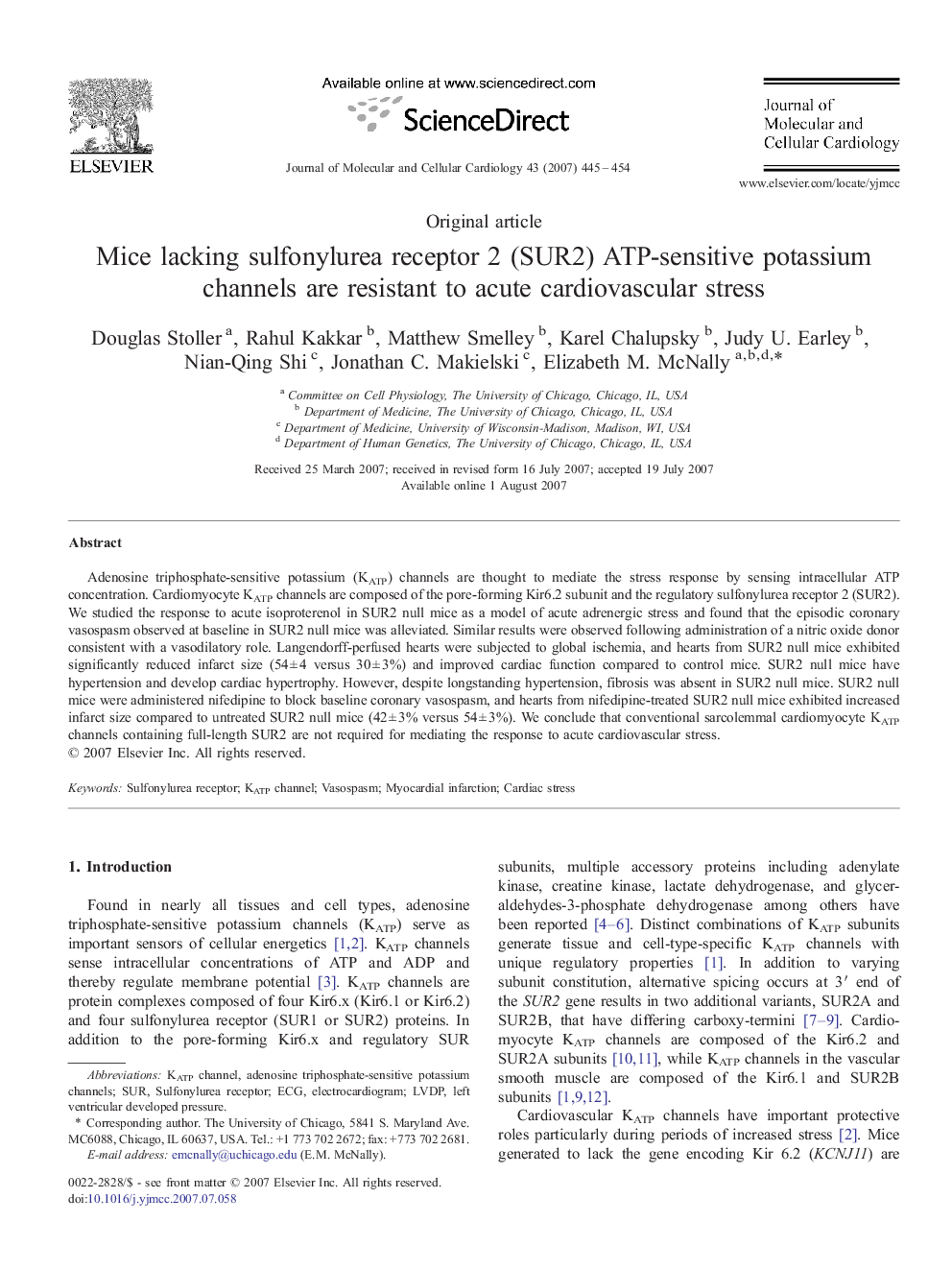| Article ID | Journal | Published Year | Pages | File Type |
|---|---|---|---|---|
| 2191926 | Journal of Molecular and Cellular Cardiology | 2007 | 10 Pages |
Adenosine triphosphate-sensitive potassium (KATP) channels are thought to mediate the stress response by sensing intracellular ATP concentration. Cardiomyocyte KATP channels are composed of the pore-forming Kir6.2 subunit and the regulatory sulfonylurea receptor 2 (SUR2). We studied the response to acute isoproterenol in SUR2 null mice as a model of acute adrenergic stress and found that the episodic coronary vasospasm observed at baseline in SUR2 null mice was alleviated. Similar results were observed following administration of a nitric oxide donor consistent with a vasodilatory role. Langendorff-perfused hearts were subjected to global ischemia, and hearts from SUR2 null mice exhibited significantly reduced infarct size (54 ± 4 versus 30 ± 3%) and improved cardiac function compared to control mice. SUR2 null mice have hypertension and develop cardiac hypertrophy. However, despite longstanding hypertension, fibrosis was absent in SUR2 null mice. SUR2 null mice were administered nifedipine to block baseline coronary vasospasm, and hearts from nifedipine-treated SUR2 null mice exhibited increased infarct size compared to untreated SUR2 null mice (42 ± 3% versus 54 ± 3%). We conclude that conventional sarcolemmal cardiomyocyte KATP channels containing full-length SUR2 are not required for mediating the response to acute cardiovascular stress.
